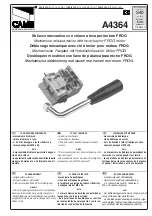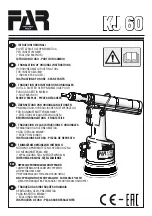Reviews:
No comments
Related manuals for IVP

FROG series
Brand: CAME Pages: 2

KJ 60
Brand: FAR Pages: 76

GB7624
Brand: Gage Bilt Pages: 9

GB752SH
Brand: Gage Bilt Pages: 13

GB731OS/206
Brand: Gage Bilt Pages: 24

RFJ-3000AL
Brand: Ranger Products Pages: 8

6-1132
Brand: Napa Pages: 14

S133410
Brand: Cleco Pages: 20

RP7808H
Brand: Walter Pages: 60

1212463
Brand: Phoenix Contact Pages: 36

5903818901
Brand: Scheppach Pages: 120

448.2,5
Brand: Facom Pages: 4

40100-CT
Brand: Cutech Pages: 33

G0615
Brand: Grizzly Pages: 60

NM-11
Brand: SSM Pages: 10

80.25 CLT
Brand: Omer Pages: 2

8RS-EU Series
Brand: Ingersoll-Rand Pages: 51

XW034
Brand: IKH Pages: 30

















